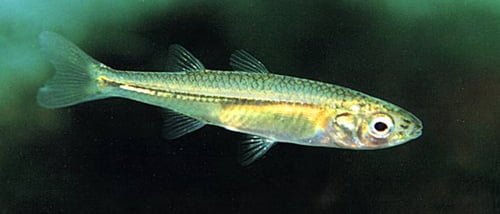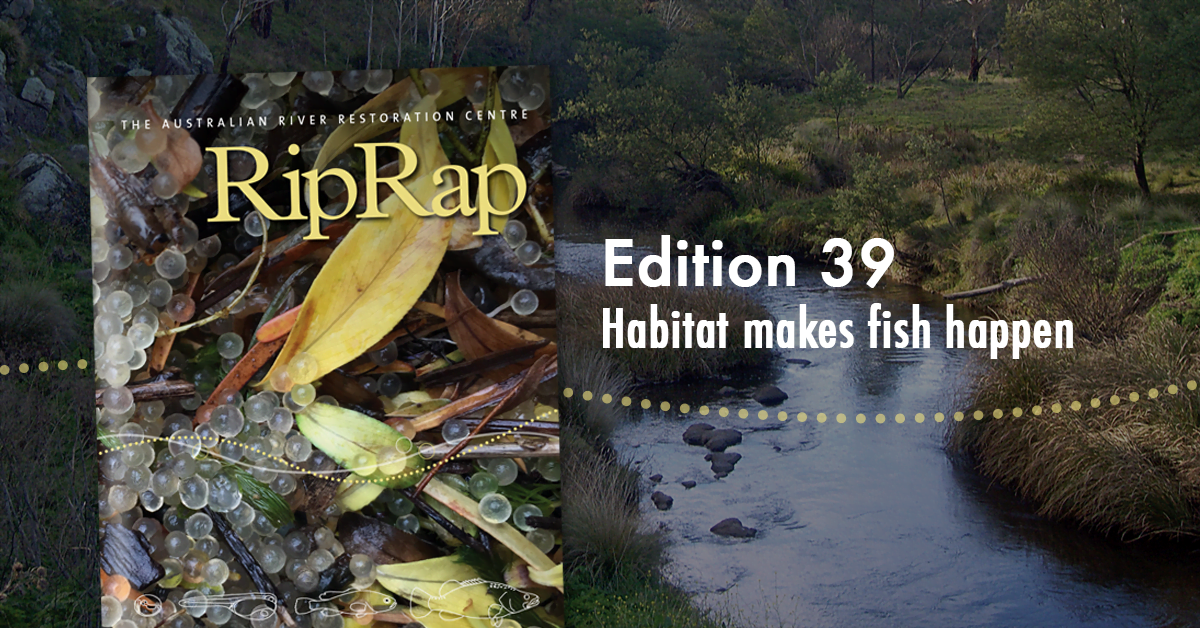The Murray hardyhead is a small fish endemic to the Murray-Darling Basin that have suffered a significant decline in distribution and abundance due to the combined impacts of drought and human processes which affect their habitat (river regulation, altered water quality, isolation of wetlands, and competition or predation from introduced fish). Murray hardyhead are incredibly salt-tolerant, and have been recorded in water ranging from 250 to 110,000 µS.cm-1. Today, remnant populations are generally only found in habitats of elevated salinity (>4000 µS.cm-1), due to the lack of dispersal mechanisms (for example, floods) and the availability of suitable habitat.
Currently, there are eight known sites within South Australia and Victoria where populations of Murray hardyhead persist. Unfortunately, the fish are likely to be extinct in New South Wales waters, as they have not been detected in the state for over a decade. The species is listed as endangered under the Environment Protection and Biodiversity Conservation Act 1999, and the International Union for the Conservation of Nature Red List. It is also listed as threatened under the Victorian Flora and Fauna Guarantee Act 1988, and critically endangered in South Australia.
A Murray hardyhead Recovery Plan has been developed with cross-jurisdictional and federal support with the following objectives:
- protect, maintain and monitor known populations, and
- increase the area of occupancy of the species.
One option for increasing the area of occupancy is to translocate fish from existing populations to sites with favourable conditions, consequently spreading the risk of extinction. Ideally, these sites will be flooplain wetlands which are close to water sources for environmental water delivery to enable natural dispersal in future flood events.

Disher Creek and Berri Basin are Murray River wetland systems used for saline water disposal in the Riverland region of South Australia. In recent decades, Murray hardyhead at these wetlands persisted in very small pockets (less than 1 hectare) of the available habitat. Work has now been undertaken to create and construct additional habitat for the fish at both Disher Creek and Berri Basin. At Disher Creek a range of infrastructure has been used to create an additional 17 hectares of habitat by making the best use of saline drainage and environmental water.
At Berri Basin a 3-kilometre long channel along its western edge captures and corrals irrigation drainage entering the site. Salinity and water levels are now manged to provide suitable habitat and breeding conditions for Murray hardyhead by the operation of flow control structures and environmental water delivery.
Monitoring of Murray hardyhead at these sites has recorded a steady increase in relative abundance since 2013 when the works were undertaken. During February 2015, monitoring of both Riverland populations captured high abundances of the fish. These results reflect a positive response to the habitat recovery efforts by the Department of Environment Water and Natural Resources, using water supplied by the Commonwealth Environmental Water Office (CEWO).
New homes of Murray hardyhead
Brickworks Billabong, in the Victorian Mallee has been prepared by the Murray-Darling Freshwater Research Centre and the Mallee Catchment Management Authority as a potential translocation site for Murray hardyhead through the delivery of water from the CEWO in 2014-15. The recovery of the Berri Basin and Disher Creek populations presented an ideal opportunity to translocate a sub-population of the fish from these South Australian sites to Brickworks Billabong. This interstate translocation addressed objectives under the National Murray hardyhead Recovery Plan.

Subsequent monitoring of Brickworks Billabong detected juvenile Murray hardyhead – evidence that the translocated fish had survived the move to a new home and subsequently bred. Monitoring in 2015 and 2016 demonstrated additional breeding success for a second successional year. To the best of our knowledge this is the first official interstate translocation of threatened fish between South Australia and Victoria.
A Murray hardyhead Recovery Team forms the centrepin of a collaborative network which responded rapidly in facilitating this cross-border translocation process. The ability to act swiftly and take advantage of windfall situations (like the population booms detected in Disher Creek and Berri Basin) is a key quality that all threatened species managers and researchers should be striving for.
This inter-jurisdictional collaboration has successfully coordinated strategic conservation actions for this species in the last decade, and is a blueprint for success in the field of freshwater fish conservation. The approach is paving a path for the streamlining of threatened freshwater fish recovery processes, and we welcome the opportunity to share what we know with others.
The Victorian Department of Environment, Land, Water and Planning (DELWP Regional Services and the Arthur Rylah Institute), Murray-Darling Freshwater Research Centre, South Australian Department of Environment, Water and Natural Resources, Mallee Catchment Management Authority, Commonwealth Environmental Water Office, Parks Victoria and the Victorian Environmental Water Holder.
Lara Suitor, Iain Ellis (Murray-Darling Freshwater Research Centre/Fisheries NSW, Department of Primary Industries) and Scott Huntley (Murray-Darling Freshwater Research Centre) developed this article.
To read this and other great stories like it, you can purchase or download a copy of RipRap 39 magazine. A pdf version of this story is also available to download here.




